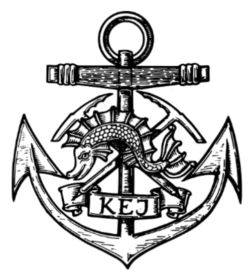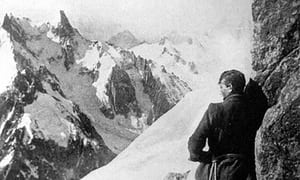Today is the birthday of George Mallory, and so what better Mountain Monday post is there than one honouring one of the world’s most famous mountaineers.
Born on the 18th of June 1886, in Cheshire, his first climbing was to the top of his father’s church, not starting on real climbing until he went to Winchester College, meeting R L G Irving, a member of the Alpine Club.
Irving took a group of students to the Alps every year and in 1905, invited Mallory along. That Autumn he was accepted to Cambridge University to study history, where he also became a radical figure, interested in socialism, and supporting the women’s suffrage movement.
One of his fellow students at Cambridge was a founder member of the Climber’s Club, Charles Sayle who took Mallory on many a trip to North Wales, where he not only spent his time climbing, but socialising with Geoffrey Winthrop Young, another famous Alpinist. He invited mallory along to his meets at Pen Y Pass and over the summer of 1909, the paid made a number of significant ascents in the Alps.
Mallory and Everest
Mallory served in France during World War One and went on to teach at Charterhouse School, but Young was constantly proposing him for the Climbing Club, and encouraging him to purse his mountaineering goals. Eventually, Mallory left his job and and joined a 1921 Everest Reconnaissance expedition, where they explored and surveyed the mountain from both the north and east, climbing to the North Col. After 3 months, Mallory was hooked. He wrote to his wife that it was a ‘thrilling business altogether’ and he couldn’t explain to her how it possessed him.
In 1922, Mallory returned to Everest with another expedition, using experimental oxygen techniques. They reached 8,225m and it was clear that bottled oxygen held the key to the higher summit. A third attempt on the summit was attempted as the monsoon season arrived, but a number of the team, mallory included, were swept down the mountain by an avalanche. The team had misread the conditions, not realising how dangerous the fresh snow on the North Col was.
In 1924, Mallory went on a lecture tour of the US to discuss his summit attempts and it’s on this tour he was thought to have given his famous answer as to why he wanted to climb, of ‘because it’s there!’.

The 1924 Everest Expedition
Mallory initially refused to join the 1924 expedition, as a friend from the previous attempt was not allowed, they wanted it to be an all British attempt. So, in June 1924, the team managed to place a high camp on the mountain at 8170m. Two pushes were made, neither for the summit, and when the time came for his last climb, Mallory chose Andrew Irvine as his climbing partner, an odd choice as he had minimal mountaineering experience. They left Camp VI on the 8th of June, after mallory had sent a note down with sherpas claiming that they had the ‘perfect weather for the job’.
The next day, another member of the team could see mallory and Irvine approaching a rock step on the upper ridge. It was 1250 and the team were surprised they were not higher at this point. He saw one figure reach the top of the step, followed by the next. The clouds rolled in, and that was the last time Mallory and Irvine were seen alive.
In 1999, on a specially commissioned expedition, an American climber, Conrad Anker, found the body of George Mallory on the upper slopes of Everest’s North Face. Did they reach the summit or not? We will never know. It’s thought that when Mallory fell it was in darkness, as his sun goggles were in a pocket. The 1999 research team returned to the mountain in 2001, 2004 and 2007 to conduct further research but it proved unsuccessful.

How did Mallory Die?
From the injuries to his body, it’s thought that he and Irvine were roped together when one of them slipped. Mallory’s body lay 300 m below an ice axe belonging to Irvine, but it’s thought he did not fall from there, as he didn’t have many breaks or fractures. He had a puncture wound on his head, consistent with an ice axe, and the general consensus is that he was attempting to self arrest when the axe struck a rock and hit him in the face, fatally. His body remains on Everest sun bleached, frozen and mummified.
Sir Edmund Hillary, who with Tenzing Norgay reached the Everest summit first, agreed with the possibility that Mallory might turn out to have summited decades earlier. Hillary said that “he was really the initial pioneer of the whole idea of climbing Mount Everest”.


